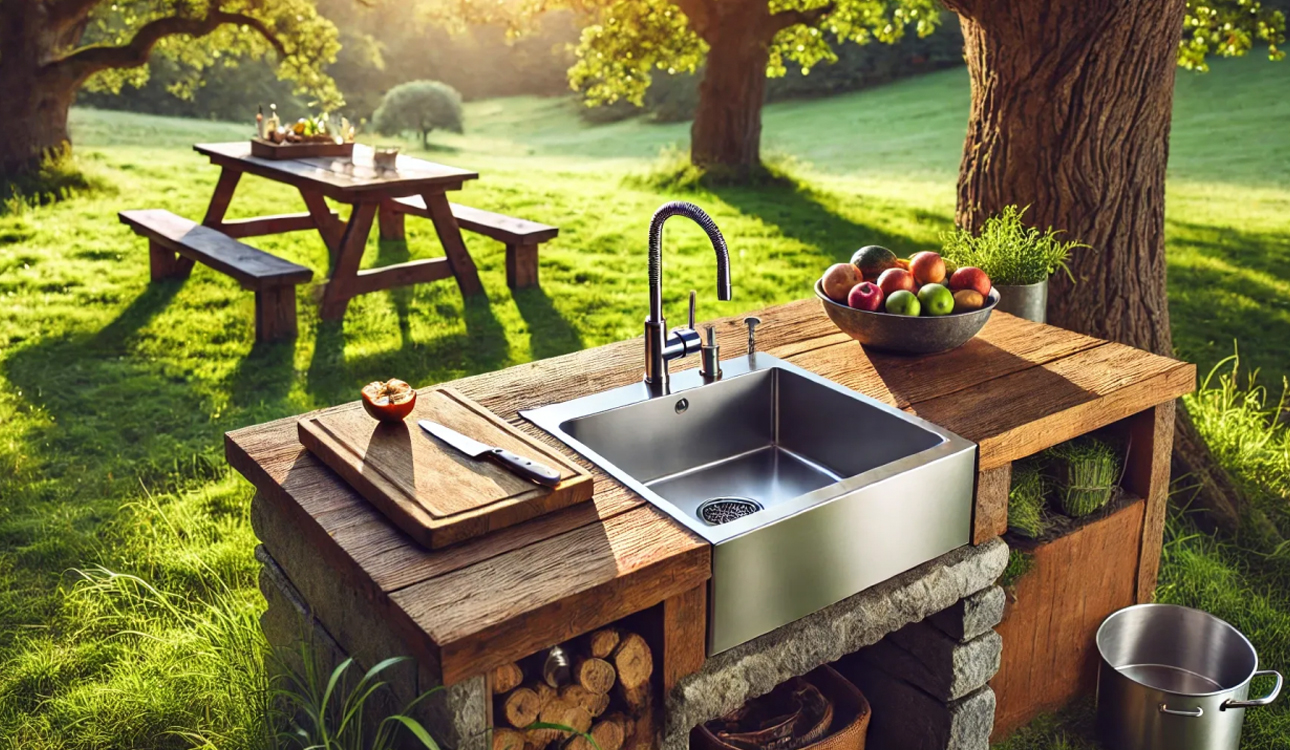A blocked kitchen sink can be one of those everyday problems that seem small but can quickly turn into a nuisance. Whether it’s food debris, grease build-up or something else causing the blockage, it can be tempting to pick up the phone and call a plumber. But before you do that, you can solve the problem yourself with a simple tool – a plunger.
“Can you really unclog the kitchen sink?” you may be wondering. The answer is yes, and it’s actually one of the easiest and most effective ways to clear a blockage. In this article, we will walk you through the process so that you can tackle the problem head-on.
1. Step: Assess the Situation
Before diving in with your sprayer, take a moment to assess the situation. If the water is still flowing, albeit slowly, the blockage may not be serious. But if you are dealing with stagnant water or a completely blocked sink, this is a clear sign of a more stubborn blockage and requires a little more effort.
Take a quick look at the sink and pipes. If you notice any signs of leaks or damage, it’s a good idea to avoid plunging as this can make the problem worse.
2.Step : Gather Your Tools
You don’t need a lot of fancy equipment for this job, just a few basic things:
Plunge Pump: For kitchen sinks, a cup-type plunger works best. Make sure it is large enough to form a tight seal over the drain hole. A small plunger may not have enough power to unclog the blockage.
Towel or Cloth: Keep a towel or cloth handy to wipe up any debris and cover the overflow drain.
Rubber Gloves (Optional): You may want to wear rubber gloves, especially if you are dealing with greasy or dirty pipes.
3.Step: Prepare the Sink
Once you have your tools, clean the sink of any dishes, food scraps or debris. If there is standing water, use a glass or bowl to remove as much of it as possible. This makes the dipping process more effective.
Next, if your sink has an overflow drain, plug it with a wet towel. This helps to focus all the pressure from the spigot on the main drain and increases your chances of clearing the blockage.
4.Step: Immersion
Place the immersion directly over the drain and make sure it forms a tight seal. Press firmly to create suction and then start dipping in an up and down motion. Aim for 10-15 tight immersions. The goal is to create enough pressure to break up whatever is blocking the drain and push it through the pipes.
Pro Tip: If you are working with a double sink, be sure to cover the second drain with a wet cloth to prevent air from escaping and reducing the effectiveness of the immersion.
If the water starts to flow after a few dips, you are on the right track. If it does not move, continue dipping a few more times. Most blockages can be cleared in 20 dips.
5.Step Check Your Progress
After you have finished dipping, remove the plunger and check if the water starts to flow. If it does, great! Run warm water down the drain to make sure the water flows freely.
If the sink is still clogged or the water is running slowly, the blockage may be deeper in the pipes. At this point, you can try a drain snake or other methods to remove the blockage. If the problem persists, it may be time to call a plumber.
6.Step : Cleaning
After removing the blockage, wipe the sink and the surrounding area. It is also a good idea to clean the plunger, especially if it was used in a very dirty drain. Disinfect the area to make sure everything is hygienic.
Tips to Prevent Future Blockages
While dipping can solve the problem for now, it is always better to prevent blockages in the first place. Here are a few tips:
Avoid Pouring Grease Down the Drain: Grease solidifies in pipes and can lead to serious blockages. Always drain grease into a container, not the sink.
Use a Sink Strainer: A strainer catches food particles and prevents them from going down the drain.
Flush with Hot Water: After each major use (such as washing dishes), run hot water down the drain to remove any grease or soap buildup.
Regular Maintenance: Once a month, try flushing the drain with a mixture of baking soda and vinegar to keep everything running smoothly.
Result
Dipping a kitchen sink is a simple but effective solution for many common blockages. With the right technique, you can clear most blockages yourself and save yourself the hassle of calling a plumber. Remember, it’s important to first assess the situation, use the right tools and take your time. And if all else fails, don’t hesitate to seek professional help. A little preventive maintenance can go a long way to keeping your kitchen sink in top condition for years to come.



